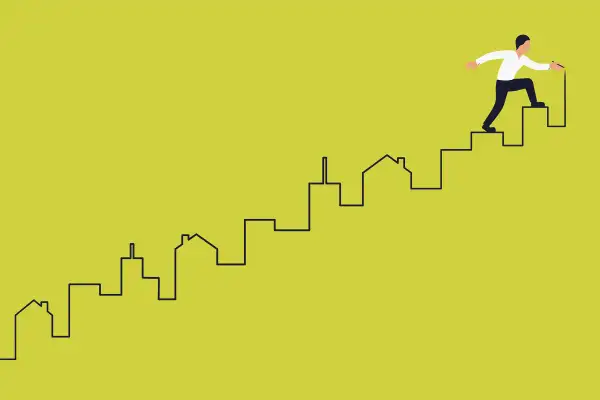It's a Surprisingly Good Time to Sell a Home. Here's How to Navigate the Coronavirus Real Estate Market

Despite the COVID-19 pandemic, it’s still a pretty good time to sell a house.
Though the U.S. unemployment rate stands at nearly 15%, the housing market was hot before economic shutdowns began, and many prospective home buyers still have money to spend. Interest rates are at historic lows: 2.73% for a 15-year fixed-rate mortgage and 3.26% for a 30-year fixed-rate loan, according to Freddie Mac.
The homes that buyers want are in short supply, too. New home starts aren’t sufficient to keep up with demand. The number of home builders controlling 90% of the market for new dwellings dropped by a quarter between 2006 and 2015, and remaining home builders are keeping the lid on supply as a way of maintaining demand—and high prices.
The upshot is that, despite large swaths of the economy being temporarily closed, many brokers and economists expect home prices to rise in 2020, if somewhat more slowly than they had hoped before the Coronavirus pandemic hit.
Looking to sell your home? Here’s what you need to know.
Your house won’t sell itself
Before the pandemic, you could sell the house for full price with just a sign in the yard, but you’d leave money on the table, says Georgia Stevens, managing broker at Compass in Bellevue, Wash. Now, with the focus switched to virtual tours, “It’s still all about the presentation.”
To get top value for your home, present it in the best possible condition, agrees St. Paul, Minn.-realtor Patrick Ruble. “There will always be homes on the market that are presented by buyers who think they’ll just evaporate, regardless of their condition,” he adds.
Paint the walls and trim. Wash the carpet. Empty the basement and crawl space. Replace the light fixtures, which go out of style quickly, Stevens says. Put new faucets on the sinks, paint outdoor furniture and play structures, put down fresh mulch, trim all the greenery and put space between it and the home.
“In pictures, you want the yard to look super crisp,” Stevens says.
Get your home inspected
Lynn Sanborn, a broker in Kirkland, Wash., suggests paying for a pre-inspection from a well-regarded inspector. When you get the results, fix the things that seem important. “Correct the things that you know will be an issue for an appraiser,” she says. “If you have a roof that only has a year of life on it, that may freak out the buyers and prevent the bank from making the loan.”
Consider including the pre-inspection results with other disclosures about the home. It’s much easier to give every potential buyer that information than to have ten prospective buyers send 10 inspectors to your home.
Knowing the property’s flaws also removes uncertainty, and that can unlock better offers. “Remove the unknowns, so prospective buyers can write the best possible offer,” Sanborn says. “People don’t pay as much for unknowns.”
Put your best pictures forward
Some photo slideshows are presented as visual walk-throughs, beginning with the front door. Don’t do that, Stevens says. “Go with your ‘wow’ pictures first,” she says. “People are looking at tiny pictures on their phones, and they need to be motivated to visit the house within about five seconds.”
Otherwise, she says, you’ll lose their attention.
Price the house for the market
Even in a relatively strong market, the sky isn’t the limit as you determine your asking price. “Prices need to be tethered to reality,” Ruble says. A realtor who has a strong knowledge of comparable homes in the same market can help you determine a fair price for your property.
Err on the side of too low a price. “It is very possible to overprice a property, even in a hot market,” Sanborn says. If the price is too high, it will scare away buyers. “The property will just sit there,” she says— and a home that spends a long time on the market can give buyers the impression that something serious is wrong with it.
If you’ve priced the place too low, on the other hand, the market will tell you: Prospective buyers will bid more than your asking price.
Expect speed and competition
You should expect multiple virtual and some in-person showings, Ruble says, especially if your house is priced below $350,000.
Keep the house clean and tidy, and make plans to be somewhere else while prospective buyers see it. “Put your valuables and your medication safely tucked away or locked up,” he says.
Hold an open house over a weekend and set an offer review date that’s about a week away from the listing date. Make sure you understand both the price and the terms of every offer.
If there are multiple offers, your agent should ask for a second round of “highest and best offers” from the initial bidders. “We’re seeing buyers bid over list price,” Ruble says. Before you count on that money, though, remember that a home has to appraise for the offer price if a buyer is to get bank financing.
“If it’s a cash offer, though, the sky’s the limit,” Ruble says.
More from Money:
Mortgage Rates Remain Near All-Time Lows as the Housing Market Looks to Rebound